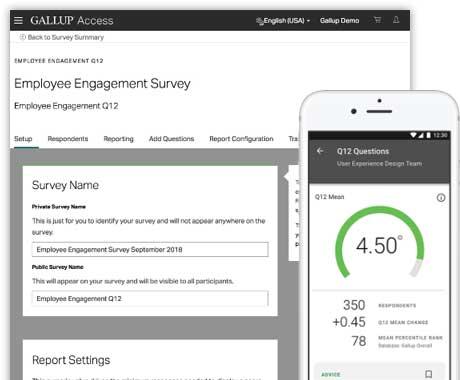Story Highlights
- The basic needs of workers affect performance, even in a crisis
- Use employee engagement as a tool for decision-making
- Employees need to believe you're tending to their wellbeing
Business continuity planning is probably the single most important leadership topic right now. And it's packed with some of the most difficult decisions leaders will ever have to make -- decisions about when, where and how to reintegrate a workforce safely, under mounting economic pressure, in an unpredictable environment.
But even in this uncertain climate, there is something that leaders can count on to consistently improve bottom-line results: meeting the basic needs of employees. No matter when, where or how they work, all employees have 12 psychological needs that must be fulfilled for them to perform at their best, Gallup research shows, and the five elements of wellbeing always affect how people work.
By embedding those factors into workforce planning strategies, leaders can support their people and make smarter, faster decisions that promote long-term business success. Here's how:
1. Use workforce engagement as a tool for decision-making during this period.
Leaders should measure employee engagement now. Especially during times of crisis, employee analytics provide invaluable, granular insights into workers' performance needs. For instance, leaders might discover that employees lack clear role expectations or materials and equipment, or that they could benefit from more frequent recognition or progress conversations with managers.
With that information, leaders can build a framework for more effective decisions and better results. For example, teams with unmet basic needs -- like materials and equipment -- should probably get back into the workspace first, in tandem with business needs and capacities. Teams that aren't connecting to mission and purpose well need to know how their work affects customers and the organization's health. Teams that are struggling to learn and grow are the best candidates for development, which is likely to be virtual for the foreseeable future.
On the other hand, if team members feel poorly cared for, their manager should be the top pick for further development. Highly engaged teams can likely continue as they are, but they can also provide best practices for other teams.
2. Utilize wellbeing data to ensure employees are supported during the transition.
Wellbeing is an urgent concern right now, but measuring and managing it has always had a positive impact on organizations. Gallup research has identified five key elements of wellbeing -- career, social, financial, community and physical -- that have a universal impact on workplace performance and resiliency.
But those elements have to be supported differently now -- physical wellbeing can't be improved through gym memberships during lockdown, social wellbeing is difficult to achieve when the workplace is off limits, and career wellbeing feels more fragile during periods of high unemployment -- so leaders must respond in new ways. That starts with truly understanding individuals: their capacity to thrive in certain elements, or struggle, or suffer, and whether they feel their organization looks out for their overall wellbeing.
Pulse surveys can show leaders employee wellbeing data in depth, alerting them to issues affecting the workplace now and offering a glimpse into the future health of the organization. Still, leaders should know that their local managers have the greatest influence on individual wellbeing in an organization -- but managers may not be adept at dealing with employee wellbeing, and they have a lot on their plate right now. Most managers badly need training and guidance to build cultures of wellbeing within their teams.
Employee engagement and wellbeing data aren't nice-to-have details -- they're need-to-have information. Gallup's global research shows that crisis situations, including the Zika virus outbreak and the Great Recession, don't affect engagement much. Employee engagement is local in nature, and largely influenced by organizations' response and culture. No matter how bad the outside world gets, the inside world of a company can remain engaged and highly functional. Wellbeing, on the other hand, is significantly influenced by the employee's environment -- but the way leaders respond to crisis situations powerfully affects employees' conduct and their confidence in leadership.
That means leaders have an opportunity to improve employees' engagement and wellbeing even as the return-to-work initiative begins. Building high engagement and thriving wellbeing into their business continuity plans may be the most beneficial thing they can do to create a stronger, more resilient, more successful organization.
Then, when the pandemic is behind us -- and the workplace is safe, the economic pressure is eased and the environment is more predictable -- they'll have guardrails in place that enable data-driven decisions and prioritization of resources. And that will be key to capitalizing on the opportunities that the future will bring.
Gather employee engagement and wellbeing data, and then make sense of them:
- Learn how Gallup Access can help your teams reach their potential (and achieve your business goals).
- Partner with Gallup to develop or renew your wellbeing strategy.
- View our on-demand webinar, "Maintaining Employee Wellbeing Through the COVID-19 Disruption."





